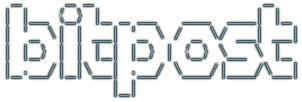Today I updated my gentoo server’s eselected PHP from 5.6 to 7.2 and wordpress phabricator and mediawiki didn’t even hiccup. WordPress went from a steaming pile of stubborn version upgrade refusal right back into line. I used mysqldump to back up all my databases, less than a GB. I git pulled phabricator’s stable branch (updated weekly from master) and ran a boatload of database patches that went smooth as coconut milkfat. I git-skipped the .arcconfig files so i could just update them in place. OK… why did that all just work?
Update: I went ahead and made the phabricator-recommended changes to mysql and PHP, including installing a PHP memory-based cache:
emerge -DavuN dev-php/pecl-apcu
And that, of course, cascaded me into a gentoo server update.
- first I had to [emerge -av glibc] as it was ancient
- do not put comments in [/etc/portage/package.use/zzz_autounmask]
- used advice from gentoo perl docs:
emerge -uDNav --with-bdeps=y --backtrack=100 --autounmask-keep-masks=y @world
And away we go…
UPDATE: ok these are a few more of my “favorite” things…
- mediawiki required an update, I had to manually tweak my multi-site LocalSettings overrides since some themes were removed, and some were added.
- I decided to go through all the phabricator tweaks that it complains about.
- I fell into an update of my fork of Simple Web Server, not really related except that it was YA deep rabbit hole.
- Files served up were made real pretty with this; I had to tweak the .htaccess to make it correctly mo safe.
- Moving to boost 1_69_0 was actually a lot of (CPU) work.
- While I was moving things around, I set up a nice git flow for my stock app, with branches:
- develop
- feature/postgress-archive
- refactor/use-archive-db
- master
- release/1.55.41-pre-archive-database
- develop











